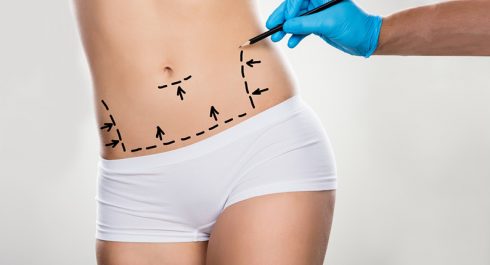
A tummy tuck, or abdominoplasty, involves the removal of excess skin and fat, resulting in a surgical incision that leads to scarring. The size, location, and appearance of scars depend on factors such as skin type, genetics, and the body’s natural healing process. let’s delve into Tummy Tuck Dubai.
How Long Do Tummy Tuck Scars Take to Heal?
Healing varies from person to person. Initially, scars appear red and raised, but they gradually fade over several months. Complete healing and fading can take up to a year or longer, depending on individual skin regeneration.
Factors That Influence Scar Formation:
Skin Type and Genetics:
Some individuals are more prone to developing noticeable scars due to their skin type and genetic predisposition. Darker skin tones may experience hyperpigmentation, while lighter skin may show more contrast in the scar area.
Surgical Technique and Incision Placement:
The technique used and the incision placement significantly impact scar appearance. A well-planned incision along natural folds of the skin can help make scars less noticeable over time.
Healing Process and Tissue Regeneration:
The body’s natural ability to heal and regenerate tissue determines the final appearance of scars. Ensuring a proper healing environment can positively influence the results.
Tips for Minimizing Tummy Tuck Scars:
Keeping the Incision Area Clean and Protected:
Maintaining hygiene in the incision area is essential for reducing complications. A clean and well-moisturized wound has a better chance of healing with minimal scarring.
Avoiding Excessive Stretching and Strain:
Minimizing tension around the incision area can prevent the scar from widening. Activities that put strain on the abdomen should be avoided in the initial healing phase.
Staying Hydrated and Eating a Balanced Diet:
Proper hydration and a nutrient-rich diet support skin elasticity and regeneration. Protein, vitamins, and antioxidants play a role in tissue repair and collagen production.
Gentle Massage Techniques for Scar Softening:
Once the incision has fully closed, gentle massage can help break down scar tissue and promote smoother healing. Massaging the area with soft circular motions can enhance blood circulation and flexibility.
Best Practices for Long-Term Scar Healing:
Consistent Skincare Routine:
A regular skincare routine focusing on hydration and nourishment can keep the scar area supple and less prominent. Hydrated skin tends to heal better and blend more naturally with surrounding areas.
Avoiding Sun Exposure:
Direct sunlight can darken scars, making them more visible. Keeping the area covered or using protective measures can prevent hyperpigmentation.
Regular Movement Without Overexertion:
Light movement aids circulation and promotes healing. Avoiding heavy lifting and strenuous exercises ensures that the scar tissue does not stretch excessively during the healing process.
Patience and Time:
Scar healing is a gradual process that requires patience. Over time, scars naturally fade and become less noticeable as the body continues to heal.
Psychological Aspects of Scarring:
Embracing the Healing Process:
Understanding that scars are a natural part of healing helps in accepting the changes that come with a Tummy Tuck in Dubai. Focusing on overall health and well-being contributes to a positive outlook.
Confidence in Appearance:
Scars represent healing and transformation. Feeling comfortable in one’s body and embracing the journey can lead to a healthier mindset about physical changes.
Final Thoughts:
Healing after a tummy tuck requires time and proper care. Being mindful of the healing process, maintaining a consistent routine, and staying patient can contribute to a smoother recovery and less noticeable scars. Over time, with care and attention, scars become a subtle reminder of a successful transformation.